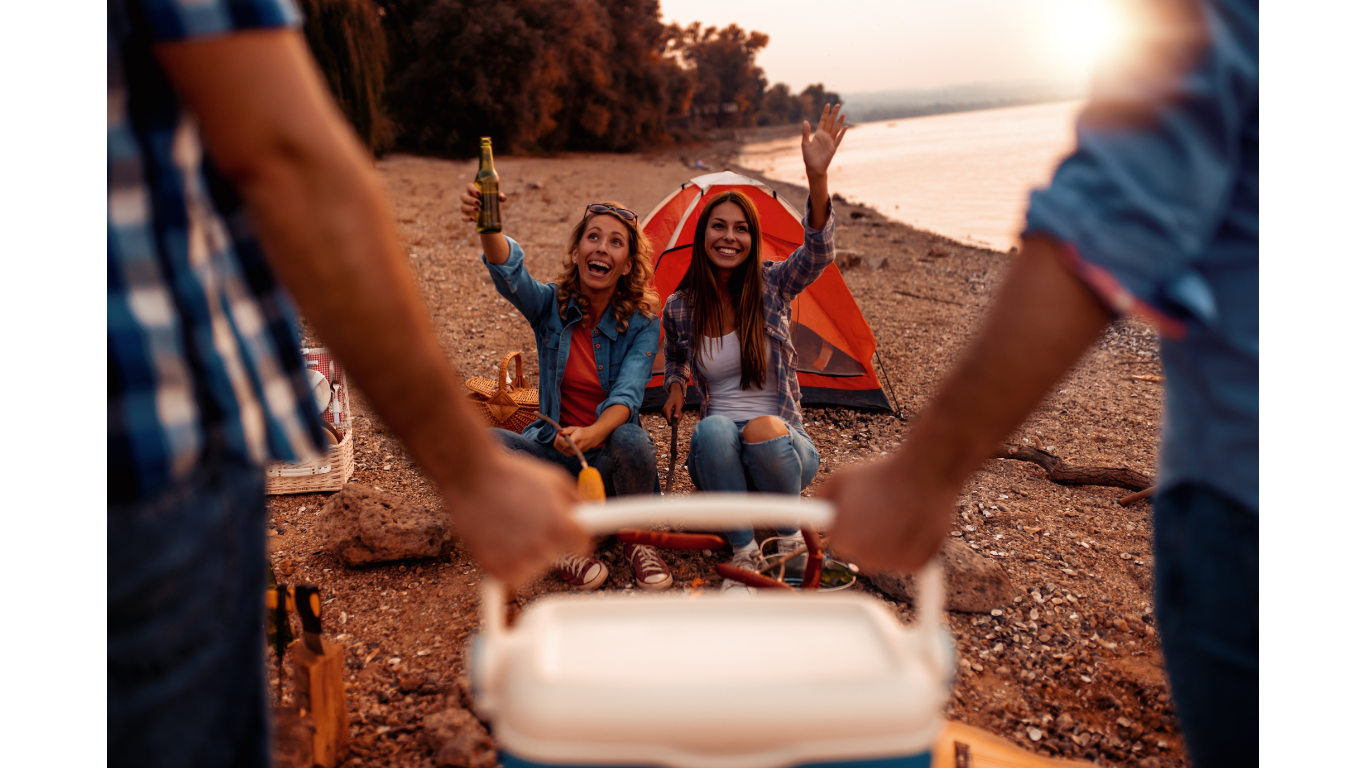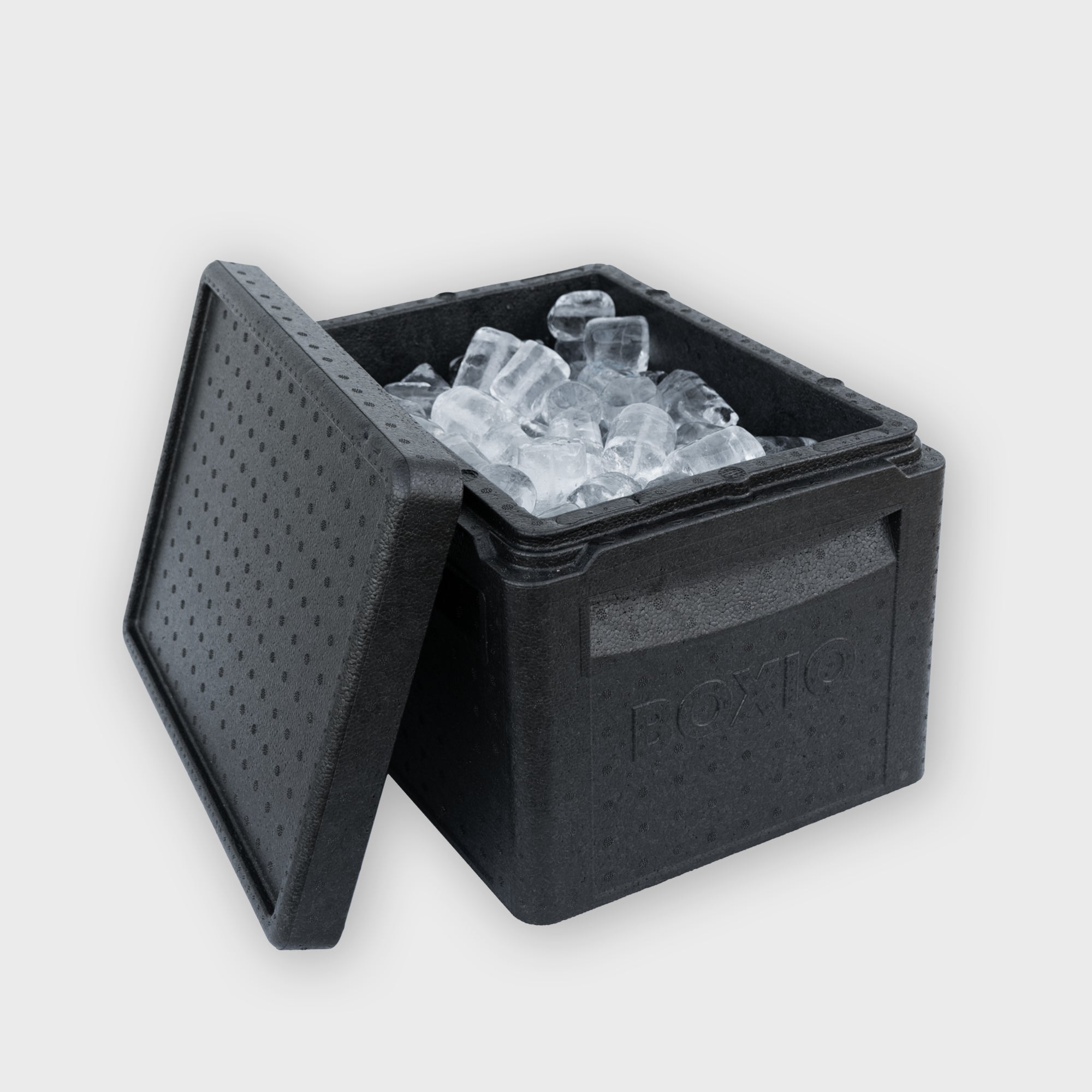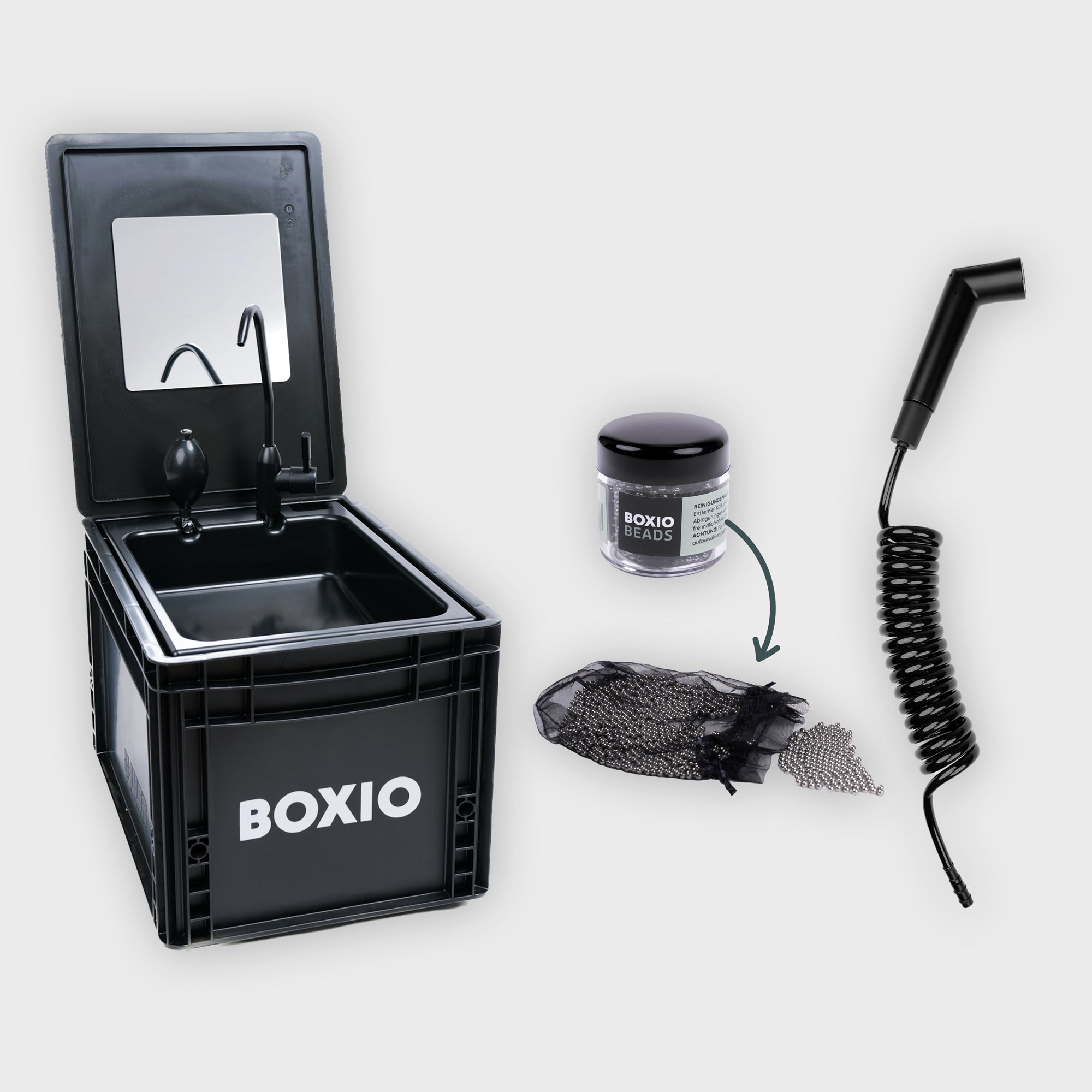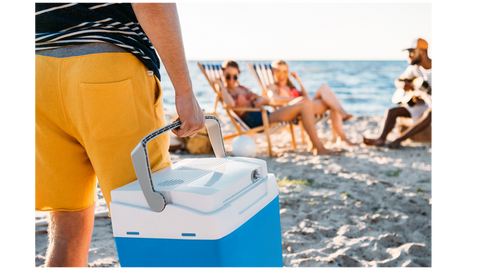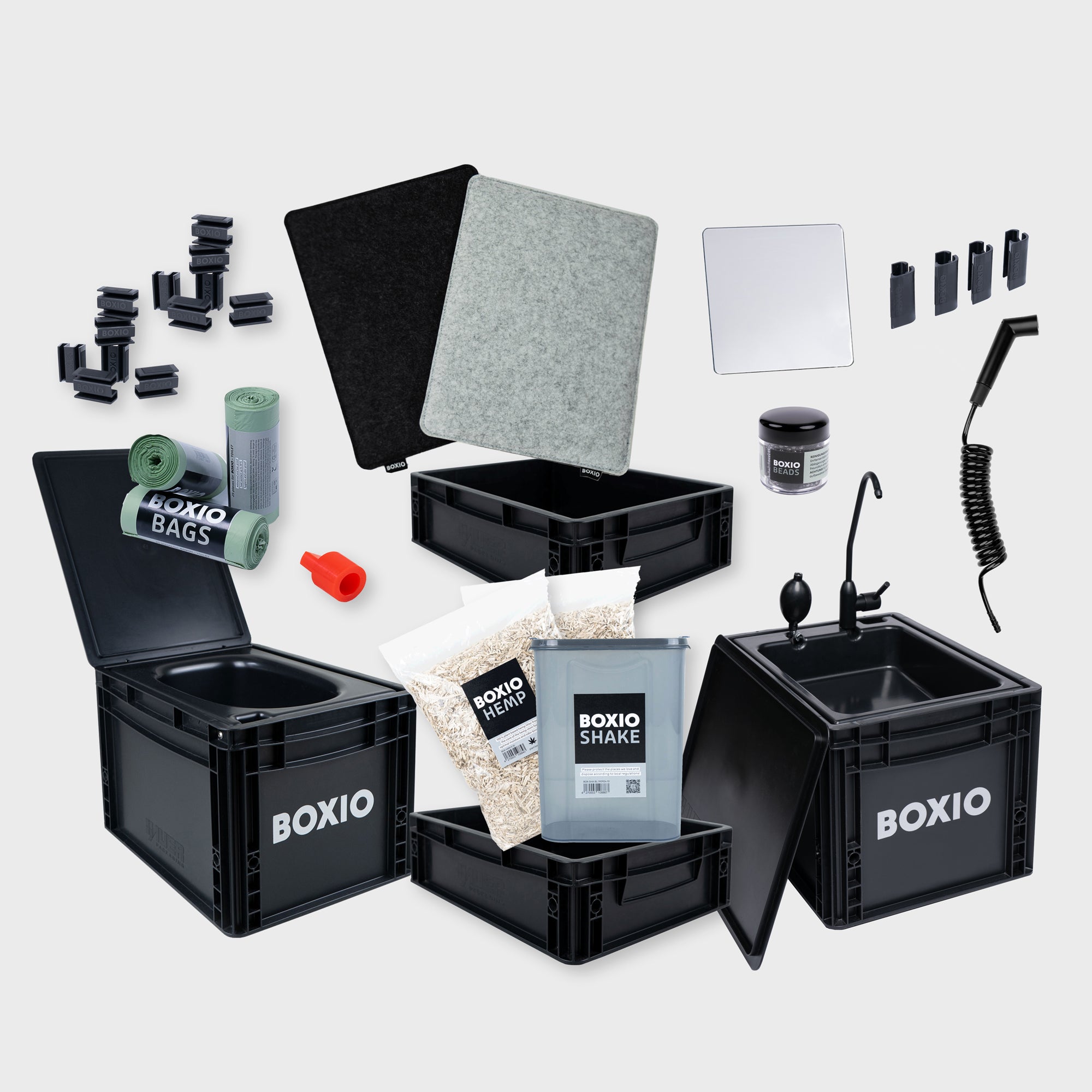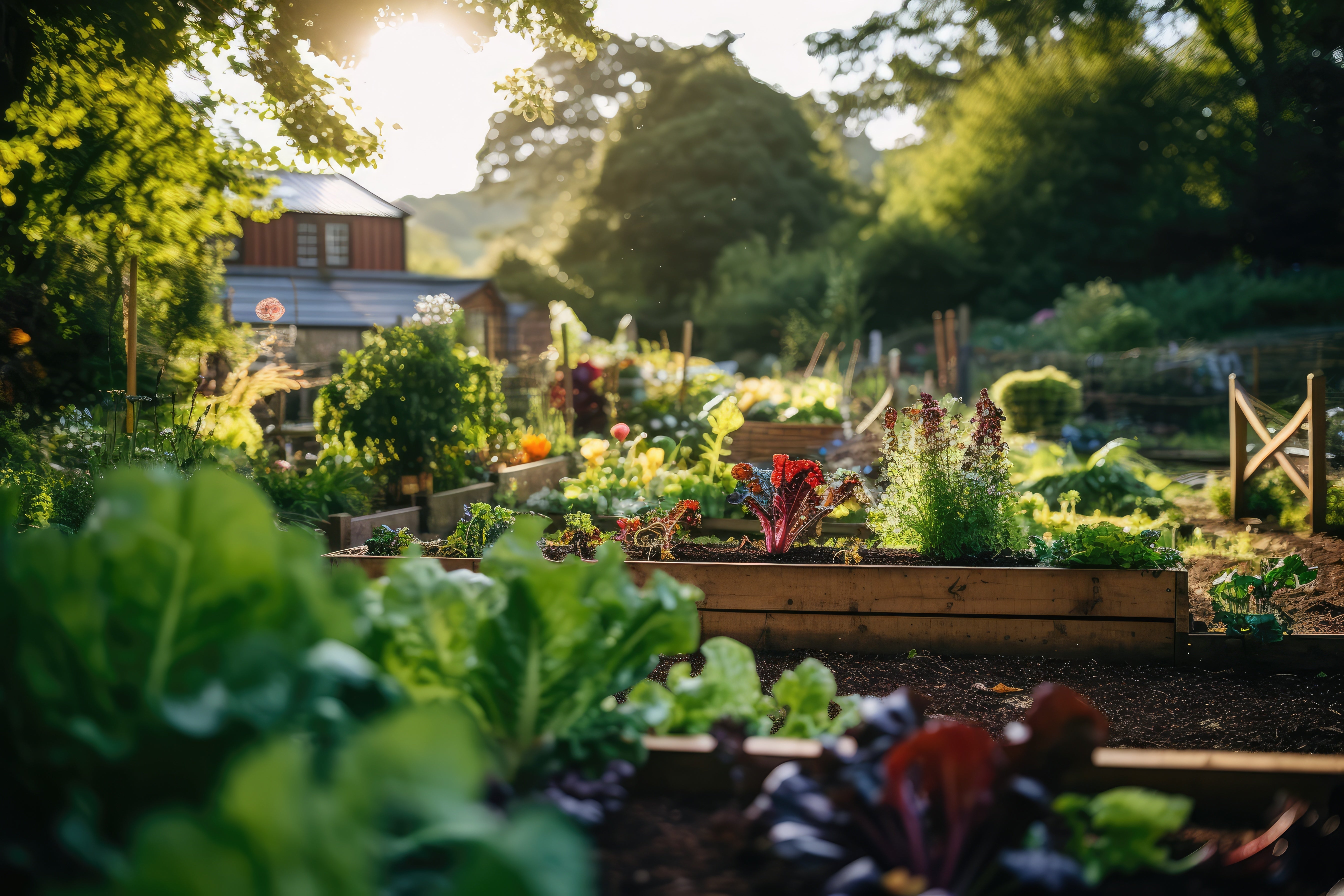Imagine you're planning a wonderful picnic in the countryside, an adventurous camping weekend or simply a casual day at the beach. A passive cool box will be your indispensable companion for all these occasions. It doesn't need a power connection to keep your treats and drinks deliciously cool - almost like a small miracle, don't you think? With a few ice packs or ice packs that you lovingly pack into this magical box, everything stays refreshingly cold without any electricity.
The special thing about your passive cool box is its simple but effective function. Thanks to innovative insulating materials, it can keep the cold in for hours, even days. Whether you're relaxing at sunset, camping under the stars or listening to the sound of the waves - your refreshments are kept safe and cool.
And you know what makes it even better? This type of cooling is not only practical, but also environmentally friendly. You save energy and protect our beautiful planet at the same time. The passive cooler will become your faithful companion for all those magical outdoor excursions where you can enjoy nature to the full while treating it with care. This leaves you more time to enjoy the moments that really matter, always with a cool sip of your favorite drink at hand.
Prepare the cooler properly before use
Okay, to get the most out of your passive cooler, there are a few things you should bear in mind. First, pre-chill the box. Put it in the fridge for a few hours or pack a few ice packs in it. When you're ready to go, fill it with pre-cooled food and drinks. This will keep everything cold for longer. Pack the cool box correctly: heavy items at the bottom, delicate items on top. Fill the gaps with additional ice packs or chilled water bottles to improve insulation. Avoid constantly opening the cool box to prevent the cold from escaping. And find a shady spot for it, direct sunlight is the enemy of passive cooling. Now everything should be ready for your trip. Have fun!
Optimal storage of the passive cooler during use
When using a passive cooler, it is important to handle it correctly so that your food and drinks stay nice and cool. Here are a few tips for optimum storage:
- **Cool location**: Place your cool box in a shady spot, away from direct sunlight. A cool surface also helps to keep the temperature down.
- **Insulation**: Place the cool box on an insulating base, such as a foam mat, to keep heat off the ground.
- **Pre-cooling**: Cool the box a few hours in advance in the fridge or with cooling elements before use.
- **Efficient packing**: Cold items to the bottom, less cool items to the top. Airtight packaging keeps food fresh for longer.
- **Avoid frequent opening**: Each opening allows cold air to escape. So pack carefully and grab what you need quickly.
With these tricks, your passive cool box will be a reliable companion on every outing.
Pack food correctly
When packing your passive cool box, it is important that you pack your food correctly. Start with a layer of cold packs or ice at the bottom of the box, as the cold rises to the top. Place your packaged food on top. It is best to use airtight containers to avoid water contamination. Place heavy items at the bottom and lighter items on top. Make sure you make optimum use of the space and avoid gaps so that the cold can spread evenly. Also important: open the cool box as rarely as possible to keep it cold. If you follow these tips, your food will stay fresh and edible for longer.
Proper cleaning and care of cool boxes
Proper cleaning and care is important to keep your passive cool box in good condition for a long time. After each use, you should first empty it completely and then wipe it out with a mild soap solution. Stubborn stains can be gently removed with a soft brush. Make sure that the box is completely dry before you close it again to prevent mold growth. Avoid harsh cleaning agents that could damage the material. For a fresh scent and extra hygiene, you can add a few drops of lemon juice or vinegar to the water. If your box has taken on an unpleasant odor, airing it out overnight often helps. With regular care, your passive cool box will remain a faithful companion on many trips.
Rinse out the cool box with clean water and wipe it with a dry cloth. Open the lid and allow the box to air dry completely to prevent mold growth. If your box has seals, check them regularly for wear and clean them carefully to preserve the insulation. Finally, keep your cool box dry and slightly open so that the air can circulate and no unpleasant odors arise.
Tips for improving cooling performance
Hey, want to get the most out of your passive cooler? Here are a few tips on how to improve the cooling performance:
- Pre-cooling is a must: put your cool box in the fridge for a few hours before use or pre-pack it with cold packs.
- Choose cold products: Only pack pre-cooled or frozen food and drinks.
- Use ice packs or ice: Fill the box with enough cold packs or ice to keep the temperature constant.
- Little air: Fill the cool box completely, as empty spaces heat up more quickly.
- Avoid direct sunlight: Place your cool box in the shade or under a blanket to protect it from heat.
- Open it rarely: Every time you open it, cold air escapes. So, plan your snacks and openings strategically!
These tricks will keep your passive cooler cold for longer and your food fresh. Have fun chilling out!
What are the uses of a passive cool box?
The passive cool box is super versatile. Whether for a day out in the countryside, camping or at sporting events, it keeps your snacks and drinks nice and cool. It's also a real savior when shopping in summer to prevent frozen goods from melting. And think of the garden party - with a passive cool box, salads and co. stay fresh until the last sausage has been grilled. Simply practical for anyone who wants to keep things cool without electricity.
- What you can use a passive cool box for: Picnics, camping trips or visits to the beach.
- The advantages of a passive cool box as a temporary replacement for a fridge in the event of a power cut.
- Using a passive cool box when transporting temperature-sensitive food when shopping.
- The use of a passive cool box at outdoor sports events for refreshment and storage of drinks and snacks.
- Use of a passive cool box for the safe storage of medicines that need to be kept cool when traveling.
- Possible uses of a passive cool box on fishing trips to keep the catch fresh.
- How a passive cool box keeps food fresh when traveling by car.
- The role of a passive cool box at garden parties and BBQs for keeping drinks and barbecue food cool.
- The use of a passive cool box in professional photography to protect heat-sensitive equipment.
- The importance of a passive cool box for street vendors to display and cool their goods.
Advantages and disadvantages of passive cool boxes
Passive coolers are great for picnics or beach days because they are lightweight and portable. You don't need a power source, which is really handy. Just pack enough ice packs or ice and your snacks will stay fresh and cool. The downside is that the cooling capacity is limited. Compared to an electric cool box, the cold doesn't last as long, especially when it's really hot. You also need to remember to freeze the cool packs beforehand. But for day trips, passive coolers are a simple and inexpensive option for keeping food and drinks cool.
Advantages
- Passive coolers are easy to use as they do not require an external power source.
- They are cost-effective compared to electric coolers as there are no energy costs.
- Passive coolers are ideal for places without access to electricity, such as remote campsites.
- They are usually lighter and therefore easier to transport than their electric counterparts.
- Maintenance is minimal, there are no mechanical parts to break.
Disadvantages
- The cooling capacity depends heavily on the number and quality of the cooling elements.
- Compared to active coolers, they do not keep food and drinks cool for as long.
- You have to plan ahead and freeze the cooling elements in advance.
- Passive coolers do not offer the option of regulating the internal temperature.
- The cooling elements need to be replaced or refrozen after prolonged use, which can be difficult without freezer access.
FAQ's about passive coolers
What is a passive cool box and how does it work?
A passive cool box is an insulated container that keeps food and drinks cool without electricity. It works through thermal insulation, which prevents heat from penetrating from the outside. In combination with cooling elements or ice, the contents remain cold for longer periods of time. What is the difference between a passive and an active cool box? In a passive cool box, the cold is generated by previously frozen cooling elements or ice cubes, whereas an active cool box is powered by electricity and often has a cooling unit. How long does food stay cold in a passive cool box? This depends on various factors, such as the outside temperature, the quality of the insulation and the amount of cooling elements used, but on average food can be kept cool for 12 to 48 hours. Can I improve a passive cooler myself? Yes, by using additional insulation materials or more or larger cooling elements, you can increase the cooling capacity of your passive cooler.
What types of passive coolers are there?
There are different types of passive coolers:
- Standard cool boxes: these are simply insulated and use ice packs or ice to keep your food and drinks cool.
- Styrofoam coolers: These are lightweight and inexpensive, but often offer lower insulation performance.
- Heavy-duty coolers: They have better insulation and robust construction, making them ideal for longer trips.
- Collapsible coolers: These are space-saving and well suited for occasional outings.
- Stainless steel coolers: They are durable and robust, but also heavier and usually more expensive.
How long does a passive cool box keep the temperature?
The length of time that a passive cool box maintains the temperature depends on various factors. This includes the model of the cooler, the outside temperatures, how often you open it and how many and what type of cooling elements you use. High-quality passive coolers can keep the cold for between 12 and 72 hours. To get the best performance, pack the cooler properly: use enough cold packs and fill empty spaces with bubble wrap or towels.
How do you look after a passive cool box properly?
To keep your passive cool box in top condition, you should clean it thoroughly after each use. To do this, remove any food residue and wipe it out with a damp cloth. Use mild soap for stubborn stains. Make sure it is completely dry before you close it again to prevent mold growth. Store in a cool, dry place. Avoid direct sunlight and extreme temperatures, as these can damage the material. Check the seals and hinges regularly so that your cool box always closes properly.
Can a passive cool box also be used for keeping warm?
Yes, you can also use a passive cool box to keep food warm. The insulating properties that keep the food cold can also help to retain heat over a certain period of time. However, the duration of keeping food warm is usually shorter than that of cooling. It is advisable to heat food beforehand and preheat the box in order to retain the heat for as long as possible.
Are there any tips for improving the cooling performance of a passive cool box?
Yes, here are a few tips to optimize the cooling performance of your passive cool box:
- Pre-cool: Pre-cool your box with ice packs before use.
- Cold products: Only pack pre-cooled drinks and food.
- Insulation: Place the cool box in the shade and use additional insulating materials such as blankets.
- Open as little as possible: Open the cool box as rarely as possible to preserve the cold air.
- Blocks of ice instead of ice cubes: Larger blocks of ice keep things cold for longer.
- Drain water: Only drain melted ice water if it impairs cooling performance.
With these measures, you can increase the efficiency of your cool box and keep your food and drinks cold for longer.


